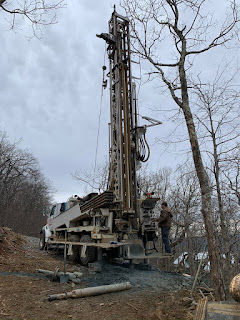Radon is something to consider when buying or selling
You cannot see, smell, or taste radon. But it still may be a
problem in your home. When you breathe air containing radon,
you increase your risk of getting lung cancer. In fact, the Surgeon
General of the United States has warned that radon is the second
leading cause of lung cancer in the United States today. If you
smoke and your home has high radon levels, your risk of lung
cancer is especially high.
Testing is the only way to find out your home’s radon levels. EPA and the Surgeon General recommend testing all homes below
the third floor for radon. If you find that you have high radon levels, there are ways to fix a radon
problem. Even very high levels can be reduced to acceptable levels.
EPA recommends that you know what the indoor radon level is in any home
you consider buying. Ask the seller for their radon test results. If the home has
a radon-reduction system, ask the seller for any information they have about the
system. If the home has not yet been tested, you should have the house
tested.
Radon is a radioactive gas that has been found in homes all over the United
States. It comes from the natural breakdown of uranium in soil, rock, and water and gets into the air you breathe. Radon typically moves up through
the ground to the air above and into your home through cracks
and other holes in the foundation. Radon can also enter your
home through well water. Your home can trap radon inside.
Any home can have a radon problem. This means new and old homes, well-sealed and drafty homes, and homes with or without basements. In fact, you and
your family are most likely to get your greatest radiation exposure at home.
That is where you spend most of your time.
Nearly one out of every 15 homes in the United States is
estimated to have an elevated radon level (4 pCi/L or more).
Elevated levels of radon gas have been found in homes in North Carolina. Contact your Realtor or state radon office for information about
radon in your area.
If you can, test your home before putting
it on the market. You should test in the lowest level of the home that could be
used regularly. This means testing in the lowest level that you currently live in
or a lower level not currently used, but which a buyer might use as a family room
or play area, etc.
The radon test result is
important information about
your home’s radon level. Some
states require radon measurement testers to follow a specific testing
protocol. If you do the test
yourself, you should carefully
follow the testing protocol for
your area or EPA’s Radon Testing
Checklist. If you hire a contractor to test your residence, protect yourself by hiring a qualified* individual or company.
You can determine a service provider’s qualifications to perform radon
measurements or to mitigate your home in several ways. Check with your state
radon office. Many states require radon professionals to be licensed, certified, or
registered. Most states can provide you with a list of knowledgeable radon service
providers doing business in the state. In states that don’t regulate radon services,
ask the contractor if they hold a professional proficiency or certification
credential. Such programs usually provide members with a photo-ID card, which
indicates their qualification(s) and its expiration date. If in doubt, you should
check with their credentialing organization. Alternatively, ask the contractor
if they’ve successfully completed formal training appropriate for testing or
mitigation, e.g., a course in radon measurement or radon mitigation.
Consider including
provisions in the contract specifying:
Where the test will be located;
Who should conduct the test;
What type of test to do;
When to do the test;
How the seller and the buyer will share the test results and
test costs (if necessary); and
When radon mitigation measures will be taken, and who will pay for them.
Make sure that the test is done in the lowest level of the home that could
be used regularly. This means the lowest level that you are going to use as
living space whether it is finished or unfinished. A state or local radon official
or qualified radon tester can help you make some of these decisions.
If you decide to finish or renovate an unfinished area of the home in the future,
a radon test should be done before starting the project and after the project is
finished.
If your test results produce levels less than 4 pCi/L the EPA considers this to be in the safe zone. Again, levels higher than 4 pCi/L should be mitigated.
Don't hesitate to call on us to help answer your questions.
If your test results produce levels less than 4 pCi/L the EPA considers this to be in the safe zone. Again, levels higher than 4 pCi/L should be mitigated.
Don't hesitate to call on us to help answer your questions.



Comments
Post a Comment